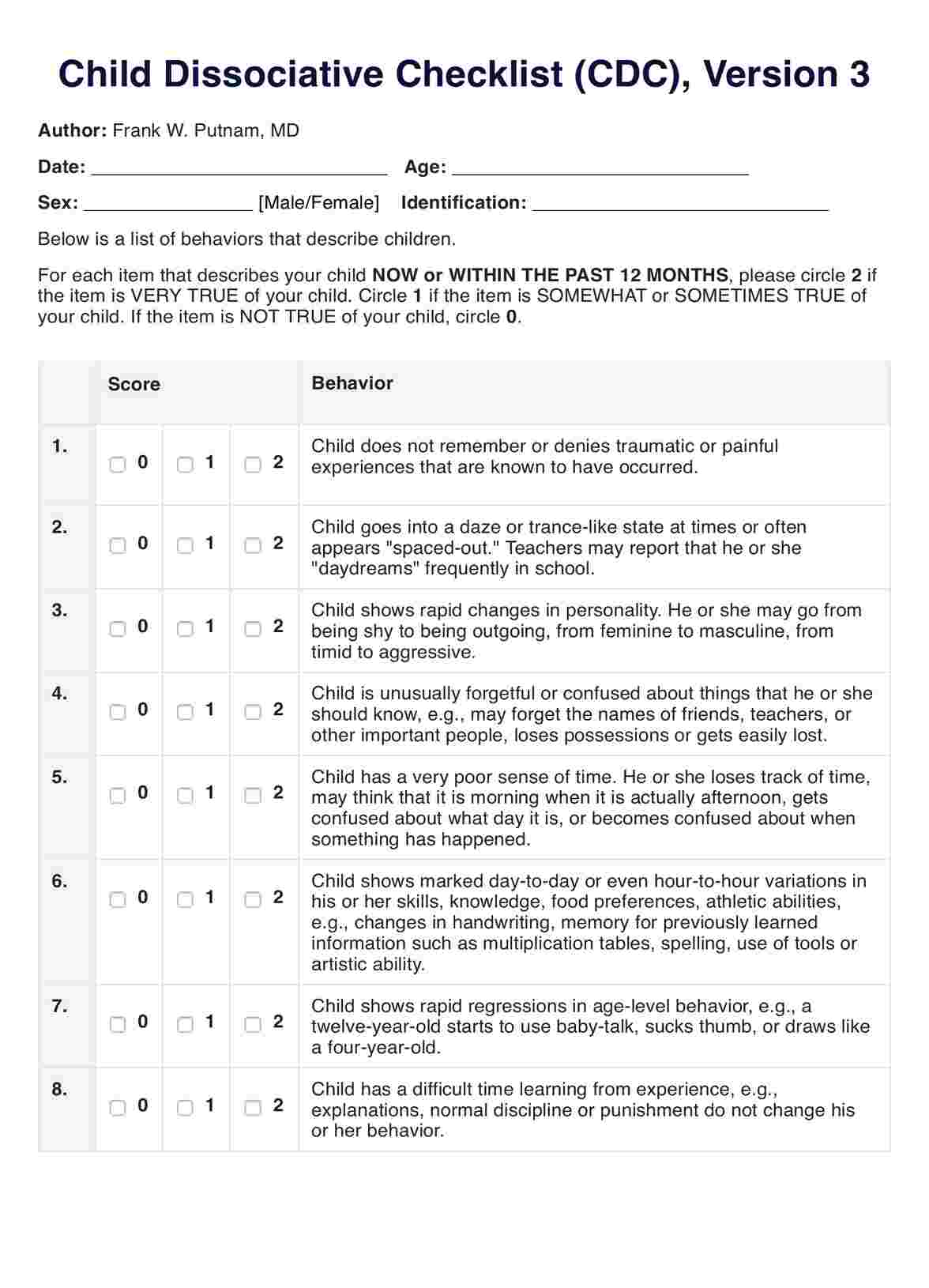The Child Dissociative Checklist Template is a tool used by mental health professionals to screen for dissociative symptoms in children. It consists of a series of statements that help in identifying behaviors and experiences indicative of dissociative disorders.

Child Dissociative Checklist
Discover our Child Dissociative Checklist template for early identification of dissociative disorders in children, ensuring prompt and appropriate care.
Use Template
Child Dissociative Checklist Template
Commonly asked questions
The checklist is designed for use by qualified professionals such as child psychologists, psychiatrists, therapists, and counselors. It's not intended for use by individuals without professional mental health training.
The checklist is scored on a scale with each item rated as 0 (Not True), 1 (Somewhat or Sometimes True), or 2 (Very True). The total score can indicate the presence and severity of dissociative symptoms.
EHR and practice management software
Get started for free
*No credit card required
Free
$0/usd
Unlimited clients
Telehealth
1GB of storage
Client portal text
Automated billing and online payments











